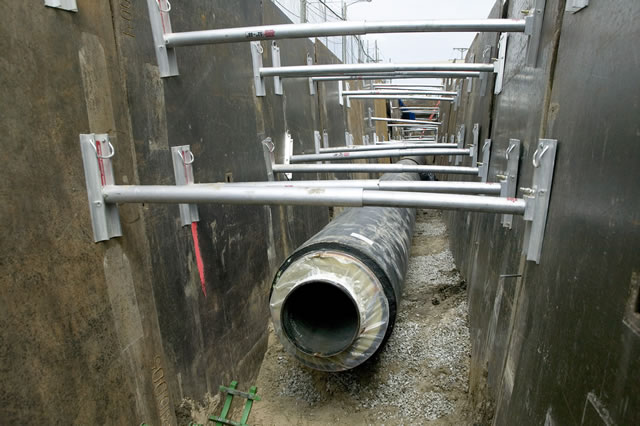 Walk past any building. Hop on board a train and ride the rails. Cross a spectacularly scenic river by traveling on a bridge. One of the many things they all have in common is welding. All of those pieces and parts have been joined together by amazingly skilled craftspeople. Each and every day, people from all walks of life are dependent upon the integrity of these welds. That’s why it is vital that this type of work is regulated and those in the industry pay heed to this regulation. This regulation comes in the form of Welding Procedure Specifications (WPS), or welding specs.
Walk past any building. Hop on board a train and ride the rails. Cross a spectacularly scenic river by traveling on a bridge. One of the many things they all have in common is welding. All of those pieces and parts have been joined together by amazingly skilled craftspeople. Each and every day, people from all walks of life are dependent upon the integrity of these welds. That’s why it is vital that this type of work is regulated and those in the industry pay heed to this regulation. This regulation comes in the form of Welding Procedure Specifications (WPS), or welding specs.
What Are Welding Specs?
As anyone can tell from a quick check of Wikipedia, welding specs are specific procedures to be followed during a welding project. They are outlined in a formal document ensuring that welders make sound and quality production welds as per code requirements. These codes should be second-hand knowledge to qualified welders and originate from organizations such as The American Society of Mechanical Engineers, The American Welding Society, and others. Welding specs must be developed for each and every welding project to ensure quality and safety on the job.
Why the Need for Weld Specs?
Stop for a moment to think about how many different types of metals exist. You’re dealing with everything from copper and stainless steel to steel and titanium. Different metals require different types of welds. For instance, you’re going to need a different type of weld on, say, stainless steel pipes than you would on the girders for a suspension bridge. You cannot apply the same welding techniques to every type of metal. For this reason, project managers must establish a weld specs document for each and every welding job.
As you would imagine, this can be a costly, time-consuming task, but one that is well worth the investment of time and finances. It’s sad to say, but only 10-20% of companies today require weld specs for their contractors. That’s not to say that 80% of the welds you see today are in danger of coming apart, but it’s certainly something we’ve had to deal with here at TMS. And once is one time too many.
To give you an example, one recent piping order we received from overseas did not have one weld that passed inspection. That simply won’t do. We were not able to use any of that material for our end of the project and it resulted in a loss of time and money for the other parties. If weld specs were in place, that situation would not have happened.
Consistency is key when it comes to welding. If someone orders thirty storage racks with over a hundred cut metal pieces on each rack, the last weld on rack thirty should be exactly the same as the first weld on rack one. You see, it’s not just products that are involved. Depending on what is being supported by each weld – lives could be at stake. That definitely puts the importance of weld specs into perspective.
Put the Specs to the Test
The first test is with the individual welder. The welder must be certified for the type of weld called for on the WPS and this is done through a qualification test documented in a Welder Qualification Test Record (WQTR). Once a welder is certified, he or she can perform this type of weld continuously without recertification as long as the weld is performed within a six-month period. Anything outside of six months will require recertification.
As far as the welding project itself, the WPS is supported by a Procedure Qualification Record (PQR), which is a record of a test weld performed and tested (more rigorously) to ensure that the procedure will produce a good weld.
As you can see, welding is more than just a matter of acquiring a stinger, dropping the visor and going to work. Quality welds require quality welders, certified by specific testing methods. At TMS, we can take you step by step through the process before your contractor makes the first weld.

